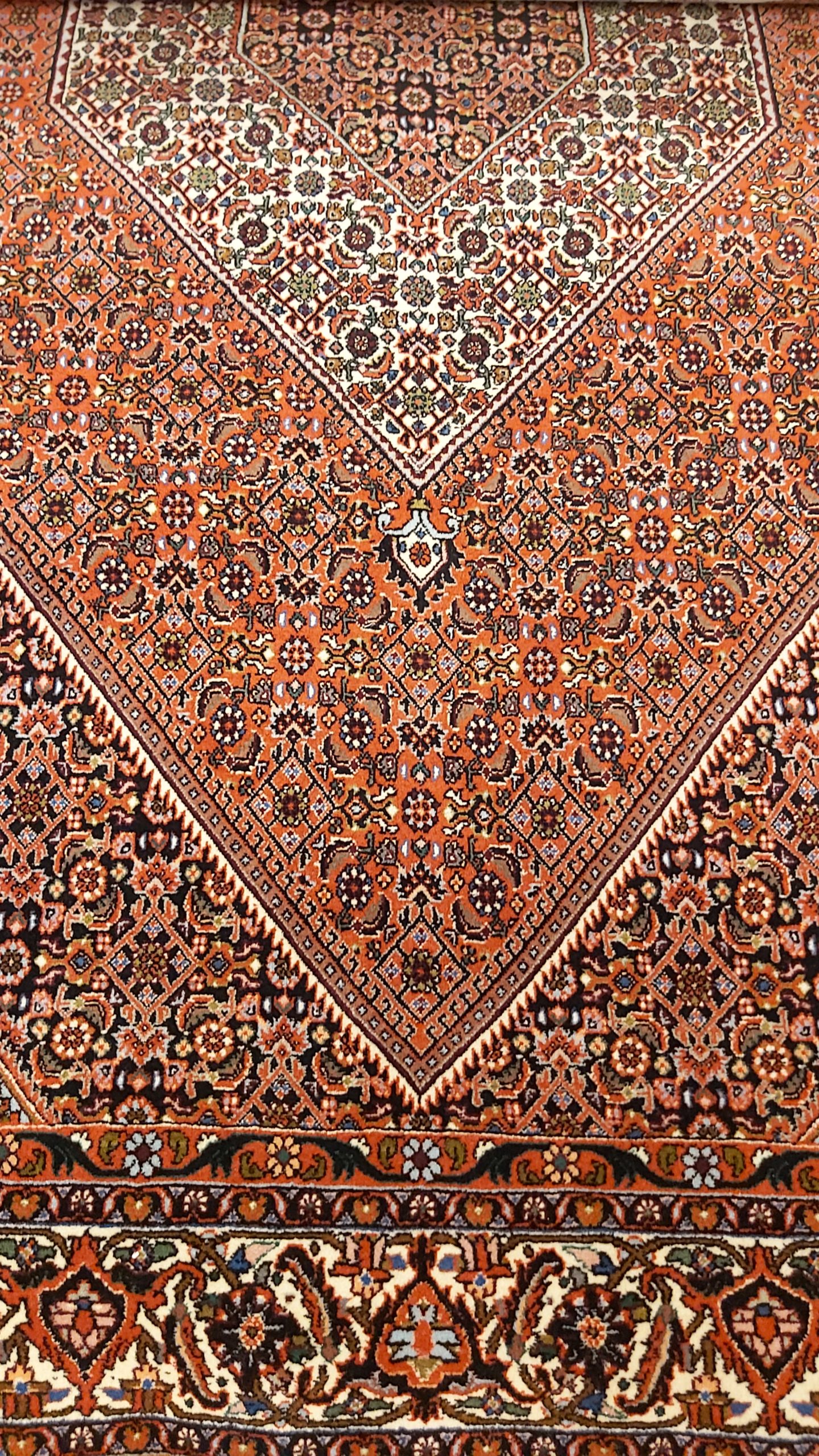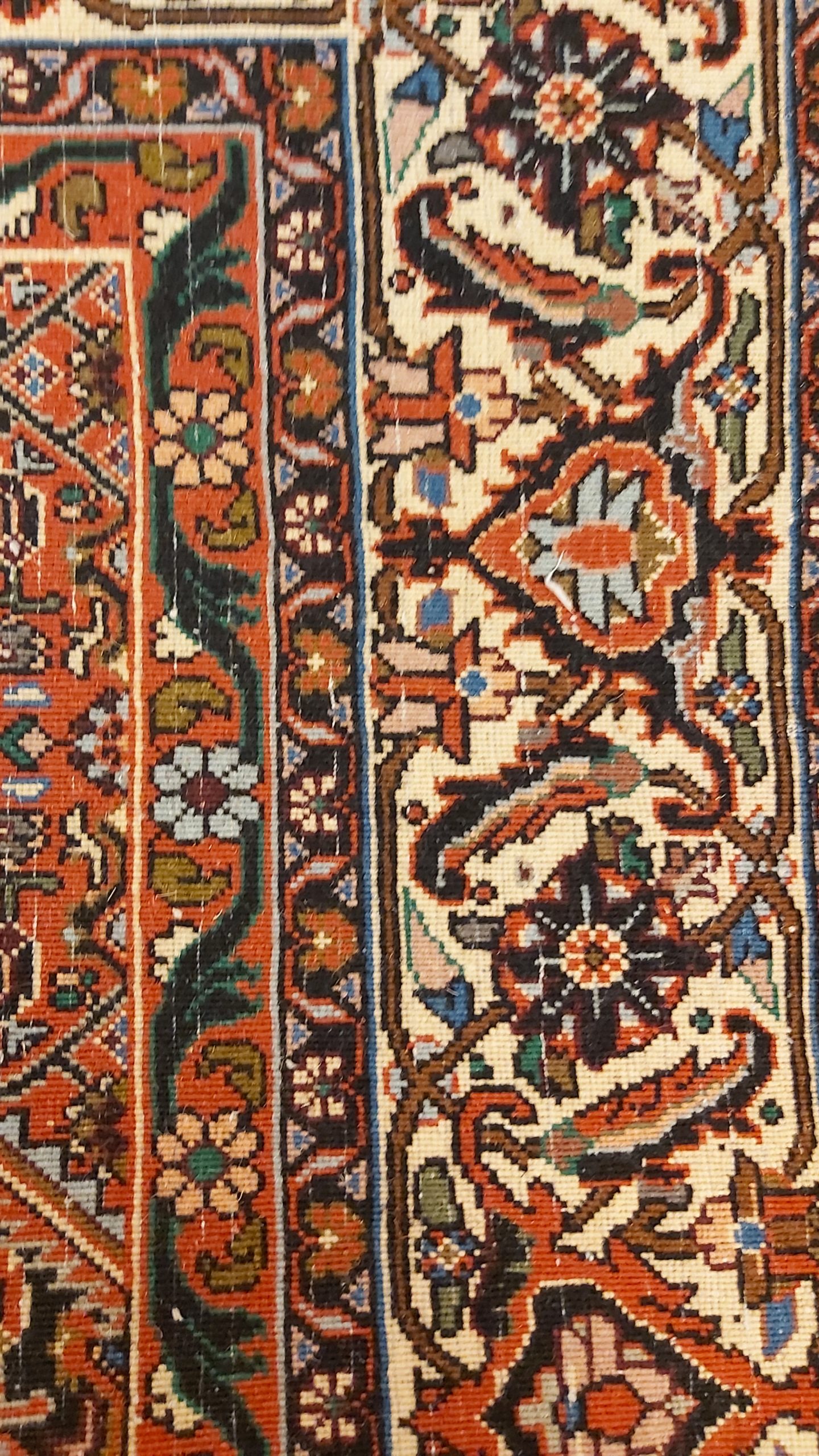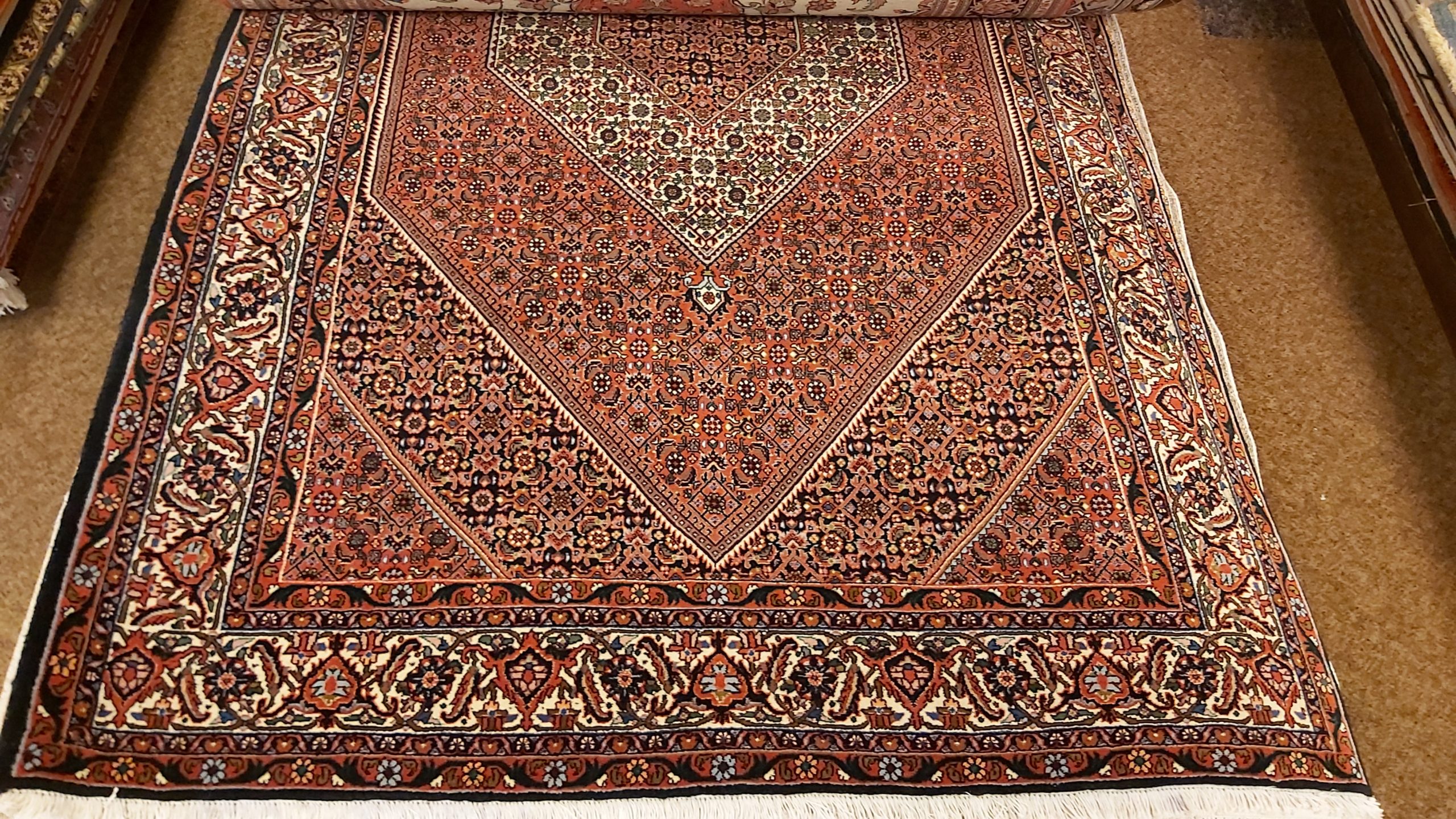Bijar, Iran: Unveiling The Enduring Legacy Of Persia's Iron Rugs
Bijar, Iran, is a city steeped in history, nestled within the Kurdistan Province, a region renowned for its rich cultural heritage and breathtaking landscapes. Often referred to as the "Roof of Iran" due to its high altitude, Bijar stands as a testament to ancient Iranian civilization, with roots stretching back to antiquity. While its mountainous terrain and historical sites, such as the ancient Qam Cheqay castle, contribute to its allure, it is the city's unparalleled contribution to the world of oriental carpets that truly sets it apart.
For centuries, Bijar has been synonymous with some of the most robust and intricately designed handwoven rugs on the planet. These masterpieces, affectionately known as "iron rugs" due to their extraordinary durability, are a direct reflection of the resourcefulness and artistic prowess of the Kurdish weavers who call this region home. This article delves deep into the essence of Bijar, exploring its geographical significance, its historical evolution, the vibrant Kurdish culture that defines it, and, most importantly, the enduring legacy of its world-famous carpets.
Table of Contents
- The Historical Tapestry of Bijar, Iran
- Geographical Significance and Climate of Bijar
- The Cultural Heartbeat: Kurdish Influence in Bijar
- Bijar Rugs: The Unparalleled "Iron Rugs of Persia"
- The Weaving Tradition: A Legacy of Skill
- Finding Authentic Bijar Rugs: A Collector's Quest
- Beyond Rugs: Other Notable Features of Bijar
- Exploring Bijar County: An Administrative Overview
The Historical Tapestry of Bijar, Iran
The city of Bijar, also spelled Bidjar, holds a significant place in the historical narrative of Iran. Its story is not merely confined to recent centuries but stretches back to the ancient Iranian period, making it one of the oldest cities in the region. This deep historical lineage provides a rich backdrop to understanding the city's development and its enduring cultural practices.
Ancient Roots and Safavid Beginnings
Bijar's historical presence is well-documented, with mentions of it as early as the 15th century. At that time, it was recognized as a village, a part of the domain belonging to Shah Ismail, the formidable first ruler of the Safavid Dynasty. This early connection to such a pivotal period in Persian history underscores its long-standing importance. The Safavid era (1501–1736) was a time of significant cultural and artistic flourishing in Iran, and it is plausible that the seeds of Bijar's renowned weaving tradition were sown or further cultivated during this period of artistic patronage. The very name "Bijar" itself, derived from the Kurdish "bi" (willow tree) and "jar" (region of such trees), points to a natural abundance that has characterized the area for centuries, suggesting a settled community long before written records.
Bijar's Growth into a Market Center
While Bijar was a village in the 15th century, it experienced substantial growth and transformation, eventually becoming a town during the 19th century. This transition likely coincided with its emergence as a vital market center in northwestern Iran. Situated approximately 150 miles south of Tabriz, another historic hub for Persian carpets, Bijar's strategic location facilitated trade and cultural exchange. The town's development into a market center would have naturally amplified its importance as a hub for local produce, crafts, and, most notably, its burgeoning carpet industry. The increasing demand for durable and beautiful Persian rugs would have spurred the growth of weaving activities in Bijar and its surrounding villages, cementing its reputation as a center of exceptional craftsmanship.
Geographical Significance and Climate of Bijar
The geographical positioning of Bijar plays a crucial role in defining its character, from its climate to its cultural connections. Located in the Kurdistan Province of Iran, Bijar is characterized by its mountainous terrain, which contributes to its unique environmental conditions and strategic importance. This rugged landscape has not only shaped the lives of its inhabitants but also influenced the very materials and techniques used in its famous rug weaving.
- Yancy Butler Relationships
- Alex Guarnaschelli Boyfriend
- Hannah Waddingham Husband
- Chanel Santini Age
- Nicki Minaj Relationship
A High-Altitude Haven
Bijar is widely recognized for its high altitude, earning it the affectionate moniker "the roof of Iran." This elevated position, situated along the western mountain range of Iran, contributes to its distinct climate. Winters in Bijar are typically cold and dry, a stark contrast to its moderate summers. This climatic variation, with its crisp, dry air, is believed by some to contribute to the quality of the wool produced in the region, which in turn impacts the durability and luster of Bijar rugs. The mountainous environment also fostered a resilient and resourceful population, whose artistic sense is vividly expressed in their traditional crafts.
Regional Connections and Borders
The township of Bijar is strategically located in the northeast of Kurdistan province. Its borders connect it to several other significant provinces and cities, highlighting its role as a regional nexus. To the north, it is restricted by the provinces of Zanjan and West Azarbaijan. To the east, it borders Zanjan and Hamadan provinces. Its southern boundary touches the township of Qorveh, while to the west, it is adjacent to the township of Sanandaj and Divandareh, both important Kurdish cities. This network of connections has historically facilitated trade routes and cultural exchanges, further enriching the Bijar region. The proximity to other weaving centers, while distinct in style, also underscores the broader regional tradition of carpet making in northwestern Iran.
The Cultural Heartbeat: Kurdish Influence in Bijar
The flat, dusty town of Bijar and its surrounding countryside are predominantly populated by Kurds, whose vibrant artistic sense and deep-rooted culture are undeniably etched into the fabric of the region, particularly evident in its grand antique carpets. The Kurdish identity is a defining feature of Bijar, influencing everything from the local language to the traditional crafts that have brought the city international acclaim. Their resourcefulness and artistic flair are perhaps most clearly visible in the antique carpets woven in Bijar and Senneh, another significant town in Persian Kurdistan.
The Kurdish people of Bijar have preserved their unique traditions and way of life, which are intrinsically linked to their mountainous environment. Their weaving practices are not merely a trade but an integral part of their cultural expression, passed down through generations. The resilience required to thrive in a challenging, high-altitude environment is mirrored in the legendary durability of their rugs. This cultural depth provides the soul for the Bijar rugs, making them more than just floor coverings, but rather narratives woven with threads of history, identity, and artistic passion.
Bijar Rugs: The Unparalleled "Iron Rugs of Persia"
When one speaks of Bijar, Iran, it is almost impossible not to immediately think of its world-renowned rugs. These handwoven oriental rugs, crafted by Kurdish weavers in Bijar itself or in the many villages in its surrounding vicinity, are celebrated globally for their exceptional quality, intricate designs, and legendary durability. Often dubbed the "iron rugs of Persia," Bijar rugs are a testament to time-honored weaving techniques that are particular to this area and tradition.
Craftsmanship and Durability: Why Bijar Rugs Endure
The reputation of Bijar rugs as "iron rugs" is well-earned. Their unparalleled durability stems from a unique weaving technique that results in an incredibly dense and compact pile. Unlike many other Persian rugs where the wefts are laid loosely, Bijar weavers use a wet-weft technique, where the weft threads are dampened and then tightly packed down with a heavy comb-like tool. This process compresses the knots, making the rug exceptionally firm and robust. The result is a carpet that is not only beautiful but also remarkably resistant to wear and tear, capable of withstanding heavy foot traffic for generations. This extraordinary resilience makes Bijar rugs a wise investment for collectors and homeowners alike, offering both aesthetic pleasure and practical longevity.
Designs, Colors, and Knot Density
Bijar rugs are admired not only for their strength but also for their distinctive and often captivating design styles. While their designs are frequently described as restrained and unobtrusive, allowing them to complement a wide range of environments, they are far from simple. Each Bijar carpet features an inimitable design style that can captivate with its intricate details and rich color palette. Common motifs include geometric patterns, medallions, and all-over floral designs, often executed with a bold and strong hand that reflects the Kurdish aesthetic.
The high knot density of Bijar rugs, often reaching up to 600,000 knots per square meter, showcases the immense effort and skill involved in their production. This high knot count allows for incredibly detailed patterns and a fine, crisp appearance. The colors used are typically rich and vibrant, derived from natural dyes, and are known for their ability to retain their vibrancy over time. Bijar rugs are available in almost all sizes, making them versatile for various spaces, from grand living rooms to cozy studies. The combination of high knot density, durable construction, and timeless designs makes each Bijar carpet a true work of art, a masterpiece of timeless beauty and unparalleled craftsmanship.
The Weaving Tradition: A Legacy of Skill
The Kurdish town of Bijar looks back on a long and proud tradition of carpet weaving, a heritage that has been meticulously preserved and passed down through generations. The resourcefulness of the Kurdish weaver is perhaps most clearly demonstrated in the antique carpets from Bijar and Senneh. When Senneh became a provincial capital in 1880, its weavers were challenged to create antique carpets of a much tighter weave, closely cut pile, and clearly detailed design, catering to the preferences of the newly arrived Persian gentry. This competitive environment likely pushed the Bijar weavers to further refine their already exceptional techniques.
The handwoven nature of Bijar rugs, using the finest quality materials, ensures that each piece is a true work of art that exudes elegance and sophistication. The skills involved in creating these carpets are not easily acquired; they are the result of years of apprenticeship and a deep understanding of materials, dyes, and complex patterns. This dedication to craft is what allows Bijar rugs to maintain their status as highly sought-after items by collectors and enthusiasts worldwide. The tradition is not just about producing a product, but about preserving a cultural legacy and an art form that defines the region.
Finding Authentic Bijar Rugs: A Collector's Quest
For many people and collectors of fine Persian rugs, such as the renowned Bijar rugs, finding the desired selection can be a challenge. This difficulty often stems from the relatively small number of truly high-quality Persian rugs, like the famous Bijar rugs or "Bidjar rugs," or fantastic Persian tribal rugs like the Gabbeh, available in local areas. The demand for these durable and beautiful pieces often outstrips the readily available supply, making the search for an authentic Bijar rug a dedicated quest.
However, for those committed to finding these exquisite pieces, options exist. Specialized dealers often maintain extensive selections of oriental rugs, including Bijar rugs, alongside other notable types such as Kazak, Heriz, Kashan, Gabbeh, Kashkuli, and Tabriz rugs. Some reputable sources even have purchasing agents in Iran year-round, ensuring a continuous supply of authentic, high-quality carpets directly from their origin. This dedication helps bridge the gap between the limited local availability and the global demand for these timeless treasures. When seeking a Bijar rug, it is crucial to look for characteristics like high knot density, robust construction, and authentic designs to ensure you are acquiring a genuine "iron rug."
Beyond Rugs: Other Notable Features of Bijar
While Bijar rugs undoubtedly dominate the city's global reputation, Bijar itself is a place of diverse interest and historical significance beyond its weaving prowess. The city serves as the capital of both Bijar County and its central district within Kurdistan Province, highlighting its administrative importance in the region. Its history, dating back to the ancient Iranian period, is palpable in its historical sites and the enduring traditions of its people.
One of Bijar's notable historical landmarks is the ancient Qam Cheqay castle. This fortress stands as a silent witness to centuries of history, offering insights into the architectural and defensive strategies of ancient Iran. Its presence underscores Bijar's long-standing role as a significant settlement. Furthermore, Bijar is recognized as one of the oldest cities in Iran, a testament to its continuous habitation and cultural development over millennia. Its high altitude and mountainous setting along the western mountain range of Iran also contribute to its unique natural beauty and provide a distinct environment that has shaped the lives and livelihoods of its inhabitants.
Exploring Bijar County: An Administrative Overview
Bijar County is an administrative division of Kurdistan Province, Iran, with the city of Bijar serving as its capital. The county encompasses a broader geographical area, including the city itself and numerous surrounding villages where the renowned Bijar rugs are also produced. The administrative structure of Bijar County ensures the governance and development of this significant region within Iran.
For those interested in geographical data, Bijar County can be located using the Geonet Names Server. By opening the advanced search box, entering the unique feature ID 9206623, and clicking on "search database," one can pinpoint its exact location and administrative details. This provides a clear reference for researchers, geographers, and anyone seeking precise information about this important part of Kurdistan Province. The county's boundaries, as previously mentioned, connect it to other provinces like Zanjan, West Azarbaijan, and Hamadan, as well as cities like Sanandaj and Divandareh, underscoring its integrated position within the broader Iranian landscape. The presence of the Bijar volcanic field in western Iran also points to the region's geological diversity, adding another layer to its multifaceted identity.
Conclusion
Bijar, Iran, is far more than just a dot on the map; it is a city rich in history, culture, and unparalleled craftsmanship. From its ancient roots as a village belonging to Shah Ismail to its evolution into a vital market center, Bijar has maintained its unique identity, largely shaped by its Kurdish population and mountainous environment. While its historical sites and high altitude contribute to its charm, it is undeniably the "iron rugs of Persia" that have brought Bijar international acclaim. These durable, intricately designed, and culturally significant carpets are a testament to centuries of weaving tradition and the extraordinary skill of the Bijar weavers.
As we've explored, the legacy of Bijar rugs is deeply intertwined with the city's heritage, offering not just beautiful floor coverings but pieces of art that tell a story of resilience, artistry, and enduring quality. Whether you are a seasoned collector or simply someone who appreciates fine craftsmanship, the allure of Bijar rugs is undeniable. We hope this comprehensive guide has shed light on the multifaceted charm of Bijar, Iran. What are your thoughts on these legendary rugs, or perhaps other hidden gems of Iranian culture? Share your insights in the comments below, and don't forget to explore our other articles on the fascinating world of oriental carpets and historical destinations!

Iran - Bijar - Dynasty Oriental Rugs

Iran - Bijar - Dynasty Oriental Rugs

Iran - Bijar - Dynasty Oriental Rugs